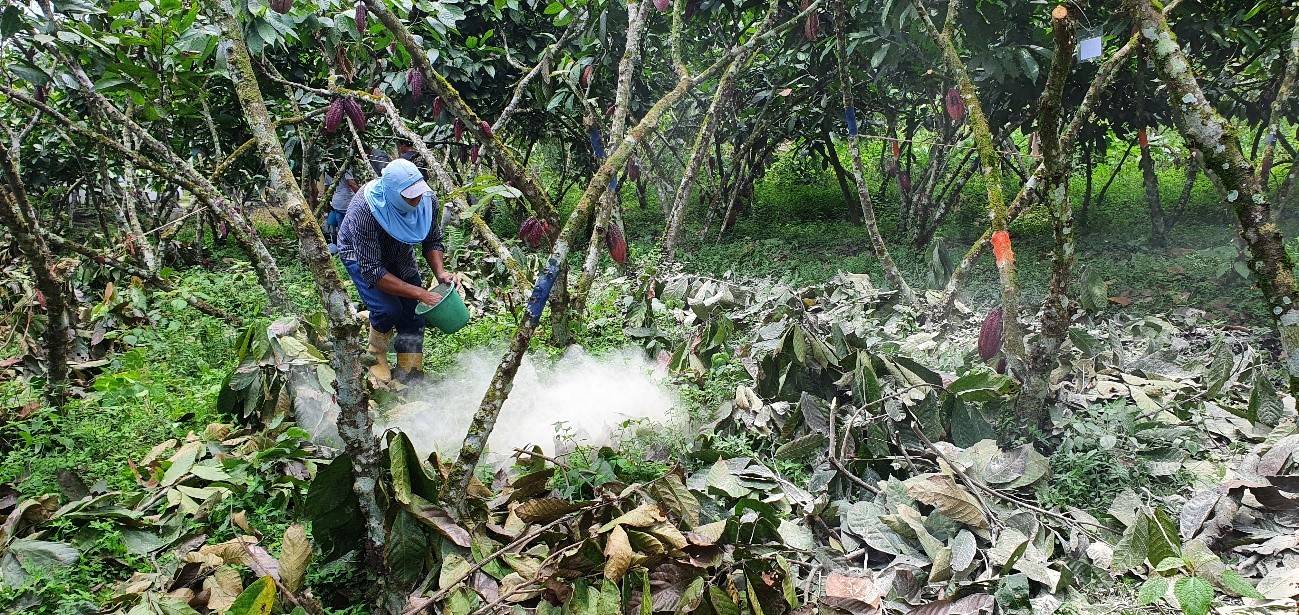The application of soil amendments as an alternative to reduce the cadmium content in cocoa beans.

Cocoa production presents cadmium (Cd) content in the almond in different zones of Ecuador. Production from contaminated places could hinder marketing in the European Community, considering the validity of a permissible level of 0.8 mg Cd kg-1 almond in this market.
There are various alternatives to reduce the Cd content in cocoa beans, the application of soil amendments stands out among all alternatives. This practice decreases the absorption of heavy metals by the roots and is part of the sustainable management of the crop.
Cocoa growing areas of the provinces of Esmeraldas, Manabí, Los Ríos, Guayas and El Oro show occasional presence of Cd in the soil. Therefore, various research works have focused on strategies to mitigate Cd contamination in cocoa beans, in particular the evaluation of the effectiveness of organic and chemical amendments applied to the soil.
In this way, within the framework of the Multi-agency Cocoa Platform for Latin America and the Caribbean project "Cacao 2030-2050", financed by the Regional Fund for Agricultural Technology - Fontagro, efforts are being made to make the crop sustainable through intervention in two phases: in the first, primary information was collected in a locality in the canton of Santa Rosa in the province of El Oro. Soil, leaf and almond samples were taken for the respective cadmium content analyzes in the INIAP laboratory, and indicators of texture, CE, pH and OM will also be determined.
For the second phase in plantations of the CCN-51 cocoa variety, amendments with doses of 2 t ha-1 plus a control are evaluated. The amendments that are evaluated are: Zeolite, vermicompost, calcium carbonate, activated carbon, charcoal and sugar cane filter cake.
The quantification of Cd will be carried out from the extracts obtained in the different digestions of soil and tissues, this process will be performed in an atomic absorption spectrophotometer (Perkin Elmer Analyst 400), coupled with a graphite furnace, the results obtained will be expressed in mg Cd kg-1 tissue.




